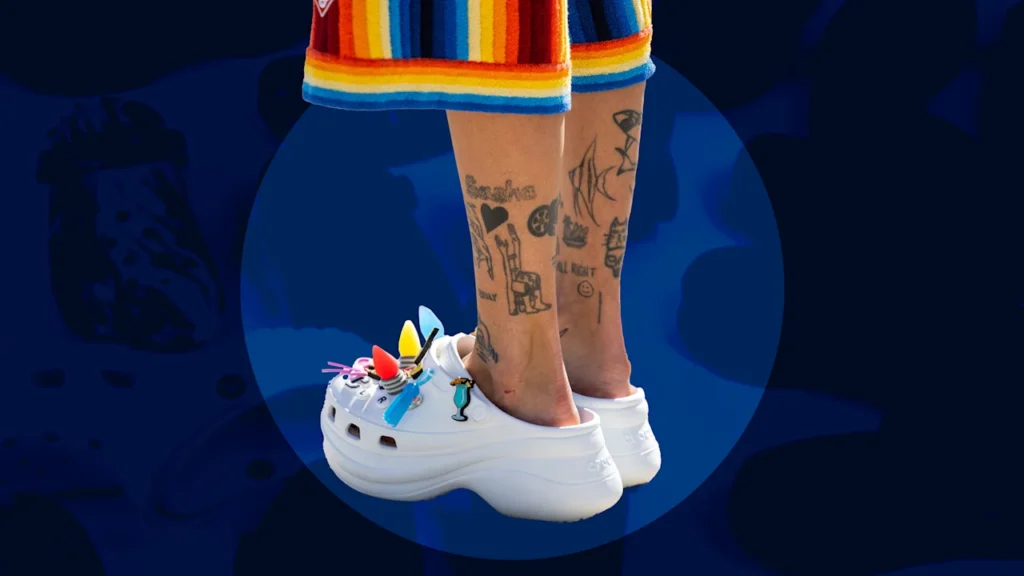
There are a lot of words marketers can’t seem to quit. “Unique.” “Authentic.” “Real.” But these are threadbare clichés, which have all but become nullified due to the erosion of their meaning, a dilution fueled by the desire for brands to be generally, yet specifically, for everyone. But “everyone” is not a target audience. It’s a comfortable void. What brands really need right now isn’t another lap around the buzzword block. It’s courage. Courage to lean into the one trait that could cut through in a world of algorithms, sameness, and mediocrity. Marketers need to be weirder.
If you want a sociological anecdote of how weird wins, look no further than online dating. Dating apps have shown us that people don’t actually want the most “normal” partner. They want quirks that stand out. Hinge data shows that profiles mentioning a niche interest—like a specific video game or obscure hobby—are more likely to get matches than generic “I like to travel” statements.
Marketing works the same way. Generic “quality service” or “trusted partner” claims are the equivalent of “I love long walks on the beach.” Tepid is a turnoff. While being good-looking can get you plenty far, to really connect, you need quirks. Mass marketing, like mass dating, creates fatigue. Precision, passion, and personalization—the pillars of weird—create chemistry. When a brand flies its freak flag high, it shows the right customers: “Yes, we’re your people.”
The Crocs case
Take Crocs. Once the fashion world’s punchline, they leaned into their weirdness with bold collabs—from KFC bucket Crocs to Balenciaga platform Crocs. Instead of pretending to be a lifestyle brand, they became a cameo brand: something you add to your life in a flash of bold comfort. Their revenue hit $3.96 billion in 2023, up nearly 12% from the year before. That’s what I call laughing all the way to the bank.
Weird is always the evolutionary advantage, the bright feather on a dull bird. Yes, it may feel like a risk to shake off the camouflage, but if your biggest problem becomes being too visible, wouldn’t that be a happy day. We’ve all heard the phrase “unprecedented times” so much it’s basically become elevator music, but unprecedented times are exactly when evolution has the most fun. Charles Darwin called it adaptive radiation—species diversifying into weird little niches that thrive when old systems collapse. Marketing is in its own adaptive radiation moment. Large language models (LLMs) and Generative AI are both collapsing the funnel and flooding the market with mediocrity and brand doppelgängers. Now more than ever, the average of averages is going to fail to thrive.
Grow a horn
So, what’s a brand to do in this mush of mid? Grow a horn. Sprout a freaky little tail. If everyone else is cranking out the same optimized “content marketing thought leadership,” weird is the mutation that keeps you from extinction. Just ask Duolingo. Their TikTok presence—anchored by a giant green owl who is somehow equal parts threatening and adorable—has over 10 million followers. It’s unhinged, it’s absurd, and it’s working. Weird didn’t just help them survive. It helped them dominate the landscape and now anyone who tries to emulate that success is just doing a bad Duolingo impression.
Now, absurdism isn’t new—it’s just having another renaissance. Whenever people face the unknown or the unbearable, weirdness bubbles up as both coping mechanism and cultural shorthand. Marketers should look to what is breaking though the anxieties of the moment and connecting and why. A giant owl twerking on TikTok, a water brand calling itself Liquid Death, a fast-food chain tweeting in all caps about sauce shortages. These are signals that brands are fluent in the absurdist yet timely language their audiences are already speaking.
In an era where sameness is free, weird is priceless. Weird is precision. Weird is passion. Weird is personal. Some call it cringe. I call it survival. And if you want your brand to not just survive but thrive in 2025 and beyond, it’s time to get a little freaky.

